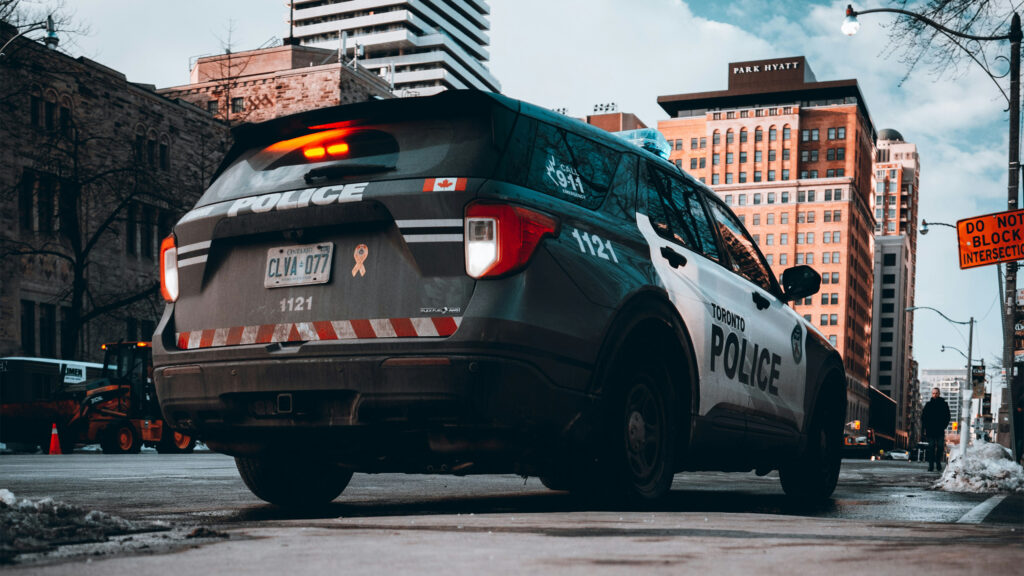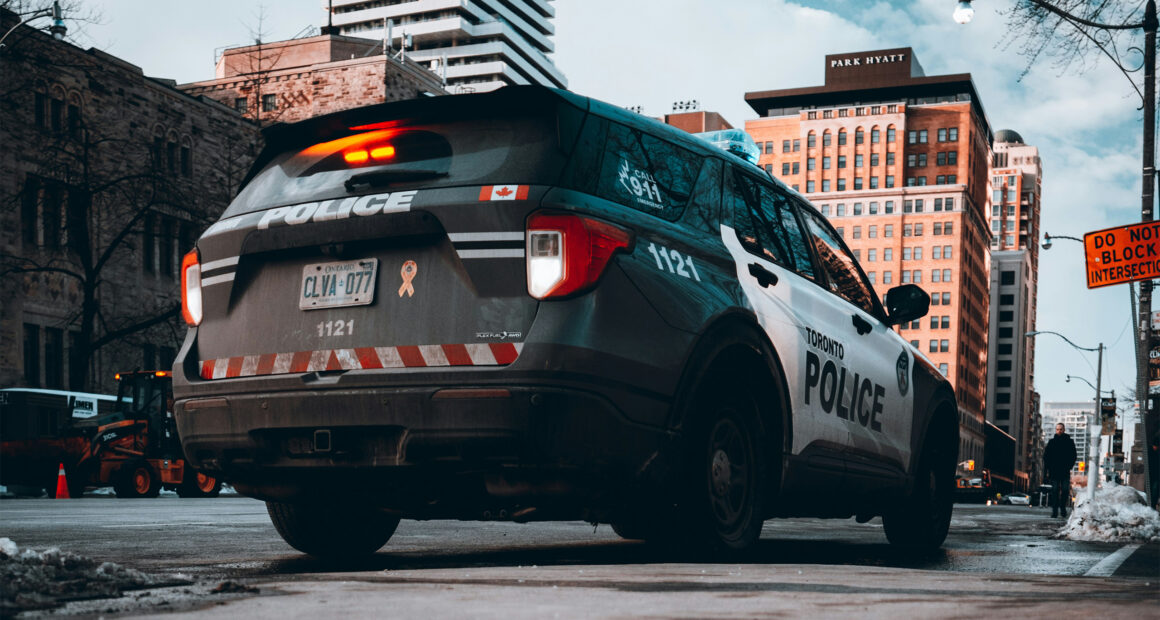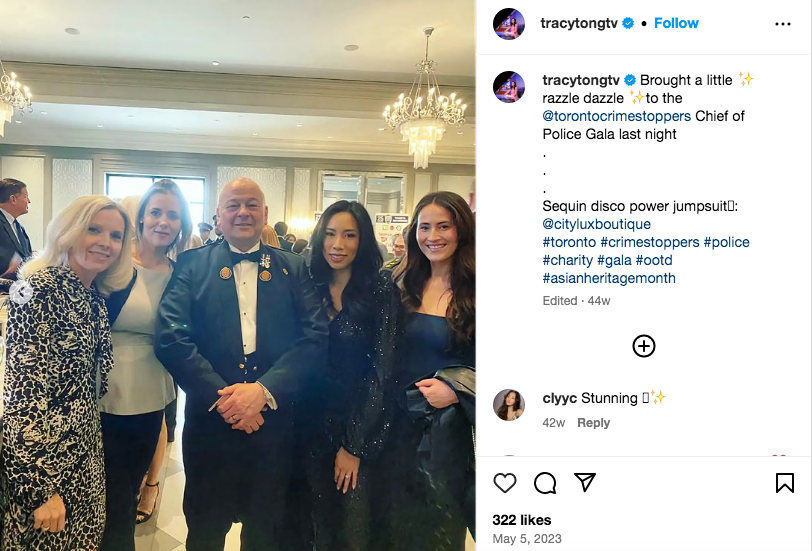Toronto police spend hundreds of thousands of dollars in PR campaigns—some of which have ties with the city’s former journalists

In 2006, Tamara Cherry, a fresh journalism school graduate, began working at the Toronto Star in the radio room, where she spent eight-hour shifts listening to scanners. She then worked at the Toronto Sun, at a workstation the newsroom called the “cop desk.” Near the desk was a fax machine to which Toronto Police Service (TPS) would send “incidents” that happened overnight.
Cherry recalls that once she would hear something of interest, she got in contact with first responders—police, firefighters, or paramedics. She would then “gather as much information as possible, as quickly as possible, to tell as comprehensive a story as possible.”
For the bulk of Cherry’s career she was a CTV crime reporter. She would arrive at the scene— on the side of the road, or a neighbourhood—with a camera and mic in hand, ready to interview as many people as possible. Through the years, Cherry got to know police officers by having coffee with them. “Wherever you’re meeting with sources,” she says, “you’re cultivating sources.”
In 2020, Cherry called it quits, leaving Toronto 10 months after launching her own PR firm, Pickup Communications. In 2022, Cherry led a TPS PR campaign called #TPSTrust, costing $60,000 in taxpayer money, where she interviewed TPS officers one on one. Cherry says, “TPS Trust was aimed at showing members the public side of police officers they don’t usually see.” Although PR work may be an alternative career for many journalists, it was Cherry’s years of crime reporting and working closely with victims that enabled her to establish connections with TPS.
Journalists, who are often required to question or hold police to account, also find themselves in an institutional relationship with them. Desmond Cole, journalist and author of The Skin We’re In: A Year of Black Resistance and Power, says, “There becomes this symbiotic relationship between local police and local news. It’s toxic, and it prevents any scrutiny of police.”
Cole adds, when the Black Lives Matter movement gained attention in 2020 and the calls for justice against police brutality, particularly after the murder of George Floyd by a police officer in Minneapolis and death of Regis Korchinski-Paquet during a police response in Toronto, the media practiced a higher level of scrutiny towards police, but only for a short while.
In September, Jeremy Appel wrote, “Toronto Media’s Uncomfortable Coziness with Police,” highlighting the 2023 Crime Stopper’s Chief of Police Dinner, emceed by Cherry. In attendance were a select number of journalists, including Tracy Tong, who has worked at CTV News, CP24, and CityNews, and Global News crime reporter Catherine McDonald. Both posed together with TPS chief Myron Demkiw in an Instagram post. In the article, Appel writes, “When it comes to police, all notions of journalistic impartiality are off the table, with reporters, producers, and editors openly schmoozing with police leadership at the annual gala.”
Kojo Damptey, an instructor at McMaster University who teaches Black and African Studies, says an over-surveillance of policing in racialized neighbourhoods means reporters are also likely to enhance negative stances of that neighbourhood. He adds that since the murder of George Floyd in 2020, and subsequent calls for defunding police, TPS has created social media campaigns or podcasts like TPS’s 24 Shades of Blue, which cost $337,000 in taxpayer money. Damptey says, “[Police] now understand that they can’t just let the public dictate what is being said about them as an institution.” This is especially true when it comes to talks of the police budget.
In recent years, Star crime reporter Wendy Gillis says police unions have become defensive in response to talks of defunding police or reducing budgets. “If it’s talking about taking away money from the police, and putting it elsewhere,” she says, “that’s definitely when there could be tension.”
Instead of reallocating funding or defunding the police, the Toronto police budget increased from $1.166 billion in 2023 to $1.174 billion this year after Demkiw argued the funding was needed to hire more police officers to improve response times. Gillis says there’s this idea of being “tough on crime”—an approach that has been proven to be unsuccessful. A study in the Canadian Public Policy journal analyzed data from 20 cities in the years 2010–2021 and found no clear relation between higher police budgets and reduced crime rates.
Alyshah Hasham, a Star City Hall reporter who formerly covered courts, says journalists have an important role to scrutinize the justice system. “There’s so much about our city that is revealed through courts,” she says, emphasizing why it’s important to explain the systemic reasons behind certain crimes. With many Torontonians struggling with unaffordable housing, food insecurity, and a lack of access to healthcare, Hasham says we need to ask, “Are we using the court system in lieu of an appropriate social service response?”
About the author
Saman is in her final year of the Master of Journalism program. She is a research assistant at TMU’s Journalism Research Centre, founder and producer of a Met Radio show, and Digital Editor & Social Media coordinator for The Otter. She has a background in communications and an interest in promoting media literacy.







